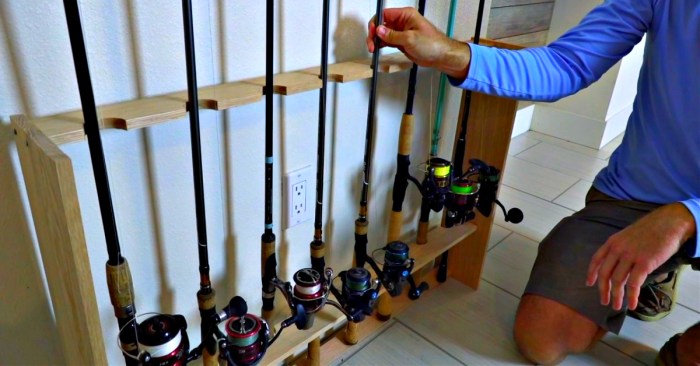DIY Waist Trainer: Create Your Own. Embark on a journey of self-expression and style with a DIY waist trainer. This comprehensive guide provides a step-by-step approach to crafting your own customized waist trainer, empowering you to achieve your desired silhouette while embracing your individuality.
From understanding the basics of waist training to exploring various design considerations, materials, and techniques, this guide will equip you with the knowledge and skills to create a waist trainer that perfectly complements your body and personal style. Discover the world of waist training and unleash your creativity as you design a unique piece that reflects your individual aesthetic.
DIY Waist Trainer Basics
Waist training is a practice that involves using a tight garment, like a corset, to compress the waist and create a more defined shape. While its effectiveness in permanently altering body shape is debated, it can provide temporary contouring and support for posture.
Materials Needed for a DIY Waist Trainer
Creating a DIY waist trainer requires a few basic materials. These materials are readily available and can be easily sourced from craft stores or online retailers.
- Fabric: Choose a strong, breathable fabric like cotton, satin, or brocade. The fabric should be firm enough to provide support but flexible enough to allow for movement.
- Boning: This provides structure and support to the waist trainer. You can use plastic boning, steel boning, or even strips of cardboard.
- Elastic: Use elastic to create a snug fit and ensure the waist trainer stays in place.
- Sewing Supplies: These include needles, thread, pins, scissors, and a sewing machine.
Creating a Simple DIY Waist Trainer
Creating a DIY waist trainer can be a fun and rewarding project. Here are step-by-step instructions for a basic waist trainer:
- Measure Your Waist: Measure your natural waistline and add a few inches for comfort.
- Cut the Fabric: Cut two rectangular pieces of fabric, each the length of your waist measurement and the desired width for the waist trainer.
- Attach Boning: Sew boning strips to the inside of the fabric panels. Space the boning evenly along the length of the fabric.
- Sew the Panels Together: Sew the two fabric panels together along the sides, leaving an opening for the closure.
- Add Elastic: Sew elastic to the top and bottom edges of the waist trainer.
- Create a Closure: Use hooks and eyes, a zipper, or a tie to create a secure closure.
Design Considerations
Designing a waist trainer involves several factors to ensure comfort, effectiveness, and safety. Understanding different designs, adjusting the fit, and creating a custom pattern based on your measurements are crucial steps.
Types of Waist Trainer Designs
The design of a waist trainer influences its effectiveness and comfort. Different designs cater to specific needs and preferences.
- Corset: A traditional waist trainer with a long, structured design that extends from the bust to the hips. Corsets are known for their ability to cinch the waist significantly and provide a smooth, hourglass figure. They typically have multiple rows of boning for support and shaping.
- Waist Cincher: A shorter version of a corset, usually ending at the waistline. Waist cinchers are designed to target the midsection and offer a more comfortable fit for daily wear. They may have fewer boning rows than corsets.
- Sport Waist Trainer: Made from breathable materials and often with a thinner design, sport waist trainers are intended for use during exercise. They are designed to support the core and provide a slight compression effect, potentially aiding in calorie burning and fat reduction.
- Latex Waist Trainer: Constructed from latex, these waist trainers offer high compression and are popular for achieving a more defined waistline. Latex can promote sweating and may help in reducing water weight.
Adjusting Size and Fit
A properly fitted waist trainer is essential for comfort and effectiveness.
- Choosing the Right Size: Measure your natural waist circumference at the narrowest point. Select a waist trainer that is 2-3 inches smaller than your natural waist size.
- Adjusting the Fit: Most waist trainers have adjustable closures, allowing you to tighten or loosen the garment for a comfortable fit.
- Wearing Time: Start with shorter wearing times and gradually increase them as you get accustomed to the compression. Avoid wearing a waist trainer for extended periods or while sleeping.
Designing a Custom Waist Trainer Pattern
Creating a custom waist trainer pattern allows for a perfect fit based on your unique body measurements.
- Measure Your Body: Take accurate measurements of your waist, hips, bust, and rib cage circumference.
- Create a Basic Pattern: Use a dressmaking pattern or a simple rectangle as a starting point. Adjust the pattern to fit your measurements.
- Add Boning Channels: Mark the locations for boning channels on the pattern.
- Cut and Sew: Cut out the pattern pieces from your chosen fabric and sew them together.
- Insert Boning: Insert boning into the channels to provide structure and support.
- Add Closure: Choose a suitable closure, such as hooks and eyes, and attach it to the waist trainer.
Materials and Techniques
Choosing the right materials and mastering the necessary techniques are crucial for creating a comfortable, effective, and durable DIY waist trainer. This section will delve into the different materials commonly used, explore various stitching and sewing techniques, and provide a comprehensive list of tools and equipment needed for your project.
Material Selection, Diy waist trainer
The choice of material for your DIY waist trainer directly impacts its comfort, effectiveness, and longevity. Here’s a comparison of commonly used materials:
- Cotton: A breathable and comfortable option, cotton is a natural fiber that allows air circulation, preventing excessive sweating. However, it can be less durable than other materials and may require additional reinforcement for heavy-duty use.
- Spandex: Known for its elasticity and ability to conform to the body, spandex offers excellent compression and support. However, it can be less breathable than cotton and may not provide as much durability.
- Polyester: A synthetic fiber that offers excellent durability and resistance to wrinkles and shrinking. Polyester is also relatively breathable and easy to maintain.
- Nylon: A strong and lightweight material that is often used in athletic wear due to its moisture-wicking properties. Nylon is also relatively durable and resistant to stretching.
- Latex: A natural rubber that offers excellent compression and support. However, latex can be less breathable than other materials and may cause allergic reactions in some individuals.
Stitching and Sewing Techniques
Mastering basic stitching and sewing techniques is essential for creating a professional-looking and functional waist trainer. Here are some techniques to consider:
- Straight Stitch: A fundamental stitch used for joining fabric pieces and creating seams. It’s versatile and can be used for both decorative and functional purposes.
- Zigzag Stitch: A versatile stitch used for finishing edges, preventing fraying, and adding decorative elements.
- Overcast Stitch: A hand-stitching technique used to prevent fraying and create a smooth, finished edge.
- Backstitch: A strengthening stitch used for securing seams and preventing them from unraveling.
- Topstitch: A decorative stitch used to enhance the appearance of the waist trainer and provide additional reinforcement.
Tools and Equipment
Having the right tools and equipment is crucial for a successful DIY waist trainer project. Here’s a list of essential items:
- Sewing Machine: A sewing machine is essential for stitching fabric pieces together and creating seams.
- Scissors: A sharp pair of scissors is essential for cutting fabric and other materials.
- Measuring Tape: A measuring tape is essential for accurately measuring your waist and the fabric pieces.
- Pins: Pins are used to hold fabric pieces together before stitching.
- Fabric Marker: A fabric marker is used for marking fabric pieces before cutting and sewing.
- Iron: An iron is used for pressing fabric pieces and creating sharp creases.
- Sewing Thread: Sewing thread is used to stitch fabric pieces together.
- Needle: A needle is used for hand-stitching and for threading the sewing machine.
- Sewing Machine Needles: Different sizes of sewing machine needles are available for various fabric types and thicknesses.
- Seam Ripper: A seam ripper is used for removing stitches when necessary.
Safety and Precautions
While DIY waist trainers can be a fun and creative project, it’s crucial to prioritize safety and understand the potential risks associated with wearing them. Waist trainers are designed to compress the abdomen, and while they can provide a temporary slimming effect, they should be used with caution.
Potential Risks
Wearing a waist trainer can lead to various discomforts and potential health concerns. It’s essential to be aware of these risks and take appropriate precautions.
- Discomfort: Waist trainers can cause discomfort, particularly when worn for extended periods. This can include tightness, pressure, and pain in the abdomen, back, and ribs.
- Skin Irritation: The pressure from a waist trainer can irritate the skin, especially if it’s not made from breathable materials. This can lead to rashes, chafing, and even infections.
- Breathing Difficulties: Tight waist trainers can restrict breathing, especially when engaging in physical activity. This can lead to shortness of breath, dizziness, and even fainting.
- Digestive Issues: Waist trainers can put pressure on the digestive system, leading to indigestion, constipation, and acid reflux.
- Back Pain: Prolonged use of a waist trainer can strain the back muscles, leading to pain and discomfort.
Safe and Responsible Use
To minimize the risks associated with waist trainers, it’s essential to use them safely and responsibly.
- Proper Fitting: The waist trainer should fit snugly but not too tightly. You should be able to comfortably breathe and move around while wearing it.
- Gradual Wear Time: Start by wearing the waist trainer for short periods and gradually increase the wear time as you get used to it.
- Breathable Materials: Choose waist trainers made from breathable materials to reduce the risk of skin irritation.
- Avoid Wearing During Exercise: Waist trainers can restrict breathing and movement, making them unsuitable for exercise.
- Listen to Your Body: If you experience any discomfort, pain, or breathing difficulties, remove the waist trainer immediately.
Consult a Healthcare Professional
It’s always a good idea to consult with a healthcare professional before embarking on waist training. They can assess your individual health status and provide guidance on the safety and appropriateness of using a waist trainer.
Customization and Personalization
Making a DIY waist trainer is a fantastic way to express your personal style. Beyond its functional benefits, you can transform it into a unique fashion statement by adding your own touch. This section explores how to personalize your waist trainer, from embellishments to adjustable features.
Adding Embellishments and Decorations
Adding embellishments can make your waist trainer more visually appealing and reflect your individual taste. Here are some ideas:
* Beads and Rhinestones: These can be sewn or glued onto the fabric to create intricate patterns or simple accents.
* Lace and Embroidery: Lace trims can be sewn around the edges of the waist trainer, or you can use embroidery to add delicate designs.
* Fabric Appliqués: Fabric scraps in different textures and colors can be sewn onto the waist trainer to create unique patterns.
* Metal Hardware: Rivets, studs, or buckles can be added for a more edgy look.
* Painting: You can paint the fabric of your waist trainer with fabric paint, creating patterns or designs.
Creating a Custom Fit with Adjustable Straps or Closures
A custom fit is crucial for a comfortable and effective waist trainer. Here’s how to achieve it:
* Adjustable Straps: Use adjustable straps made of elastic or ribbon, allowing you to tighten or loosen the waist trainer as needed.
* Hook and Eye Closures: These provide a secure and adjustable closure that allows you to customize the fit.
* Velcro Closures: Velcro closures are easy to use and offer a secure fit.
* Zipper Closures: A zipper closure can create a clean and adjustable fit.
Designing a Waist Trainer for Different Clothing Styles and Occasions
The design of your waist trainer can complement various clothing styles and occasions. Consider these ideas:
* Formal Occasions: For formal events, choose fabrics like satin, silk, or lace. Keep the design simple and elegant, using minimal embellishments.
* Casual Wear: For everyday wear, choose comfortable fabrics like cotton or stretch fabrics. You can add fun embellishments or patterns to match your casual style.
* Sportswear: For workouts, opt for breathable fabrics like mesh or athletic materials. The design should be practical and supportive.
Maintenance and Care
Proper maintenance is crucial for extending the life of your DIY waist trainer and ensuring its hygiene. Following a consistent cleaning routine and addressing wear and tear issues promptly will help you enjoy its benefits for a longer time.
Cleaning and Maintenance
Regular cleaning is essential for maintaining the hygiene of your waist trainer.
- Hand wash your waist trainer in lukewarm water with a mild detergent. Avoid using harsh chemicals or bleach, as these can damage the fabric and its elasticity.
- Rinse thoroughly to remove all soap residue.
- Air dry your waist trainer flat in a well-ventilated area, away from direct sunlight or heat. Do not use a washing machine or dryer, as this can damage the fabric and stitching.
Wear and Tear
Over time, your waist trainer may experience wear and tear, particularly in areas that experience the most stress, such as the hooks and closures.
- Loose stitching can be easily repaired with a needle and thread. Securely stitch the loose threads to prevent further unraveling.
- Worn-out hooks can be replaced with new ones. You can find replacement hooks at most fabric stores.
- Broken clasps can be repaired or replaced. If the clasp is beyond repair, you can replace it with a new one.
Storage
Proper storage helps to maintain the shape and structure of your waist trainer.
- Store your waist trainer in a cool, dry place, away from direct sunlight and heat.
- Avoid folding or crumpling your waist trainer, as this can cause wrinkles and damage the fabric.
- Hang your waist trainer on a padded hanger or lay it flat on a shelf to preserve its shape.
Alternative Waist Training Methods
While DIY waist trainers can be a fun and cost-effective option, it’s essential to explore other methods for achieving a desired waist shape. This section will delve into pre-made waist trainers, exercise, and healthy eating, providing insights into their effectiveness and comparing them to the DIY approach.
Pre-Made Waist Trainers
Purchasing a pre-made waist trainer offers several advantages. These trainers are designed by professionals, ensuring proper fit, comfort, and effectiveness. They often utilize high-quality materials and construction techniques, enhancing durability and safety.
- Variety: Pre-made waist trainers come in a wide array of styles, sizes, and materials to suit individual preferences and needs. This variety allows for greater customization and finding the perfect fit.
- Quality: Professional manufacturers employ rigorous quality control measures, ensuring the use of durable and safe materials. This minimizes the risk of skin irritation or discomfort associated with poorly constructed DIY trainers.
- Effectiveness: Pre-made waist trainers are designed to provide optimal compression and support, maximizing their effectiveness in achieving a desired waist shape.
Exercise and Healthy Eating
A holistic approach to waist training involves incorporating exercise and healthy eating habits. These methods promote long-term health benefits beyond just shaping the waistline.
- Targeted Exercises: Exercises like planks, side planks, and oblique crunches specifically target the core muscles, contributing to a smaller waistline and improved posture.
- Cardiovascular Activity: Regular cardio workouts like running, swimming, or cycling help burn calories and reduce overall body fat, indirectly influencing waist circumference.
- Balanced Diet: A balanced diet rich in fruits, vegetables, lean proteins, and whole grains supports healthy weight management and reduces the risk of developing health complications.
Comparing Effectiveness
The effectiveness of different waist training methods varies depending on individual factors like body type, genetics, and commitment level.
- DIY Waist Trainers: DIY waist trainers can be effective, but their effectiveness may be limited due to factors like material quality, fit, and safety.
- Pre-Made Waist Trainers: Pre-made waist trainers offer a higher level of effectiveness due to professional design, quality materials, and optimized compression.
- Exercise and Healthy Eating: Exercise and healthy eating provide a sustainable and long-term approach to waist training, promoting overall health and well-being.
Pros and Cons of DIY vs. Pre-Made Waist Trainers
Choosing between a DIY and a pre-made waist trainer involves weighing the pros and cons of each option.
| Feature | DIY Waist Trainer | Pre-Made Waist Trainer |
|---|---|---|
| Cost | Lower | Higher |
| Customization | High | Limited |
| Quality | Variable | High |
| Effectiveness | Moderate | High |
| Safety | Moderate | High |
Real-World Examples and Inspirations: Diy Waist Trainer
The journey to achieving your desired waistline can be both exciting and challenging. Seeing how others have successfully used DIY waist trainers can provide valuable inspiration and motivation. This section explores real-world examples and showcases the creative designs that individuals have crafted.
Inspiring Stories of DIY Waist Trainer Success
Many individuals have shared their experiences with DIY waist training, highlighting the positive transformations they’ve achieved. These stories emphasize the power of personal commitment, creativity, and resourcefulness in pursuing fitness goals.
- Sarah’s Story: Sarah, a fitness enthusiast, was inspired to create her own waist trainer after struggling to find one that fit her comfortably. She used readily available materials like elastic bands and a sturdy fabric to construct a custom-fit waist trainer. Sarah’s dedication and perseverance resulted in a noticeable reduction in her waistline and a boost in her confidence.
- John’s Journey: John, a bodybuilder, wanted to enhance his physique and decided to incorporate waist training into his routine. He experimented with various materials and techniques, ultimately crafting a durable and effective waist trainer. John’s story highlights the potential for DIY waist training to complement other fitness endeavors.
Examples of DIY Waist Trainer Projects
The realm of DIY waist trainers is brimming with creative and innovative designs. Here are some examples of projects that demonstrate the versatility and potential of this approach:
- The “Corset-Inspired” Waist Trainer: This design features a traditional corset-like structure with boning for added support and shaping. The fabric used is often a blend of cotton and spandex for comfort and flexibility.
- The “Sporty” Waist Trainer: This waist trainer prioritizes comfort and functionality. It’s typically made from breathable materials like neoprene or mesh, with adjustable straps for a personalized fit. This design is ideal for individuals who want to wear a waist trainer during workouts.
Gallery of Creative DIY Waist Trainer Designs
The beauty of DIY waist trainers lies in the endless possibilities for customization and personalization. Explore this gallery of unique designs:
- The “Floral” Waist Trainer: This design incorporates floral patterns and embellishments, adding a touch of elegance and femininity to the waist trainer. It’s perfect for individuals who want to express their personal style.
- The “Metallic” Waist Trainer: This waist trainer features metallic accents, creating a bold and eye-catching statement. The use of metallic fabrics adds a touch of glamour and sophistication.
- The “Lace” Waist Trainer: This design incorporates delicate lace patterns, offering a romantic and feminine aesthetic. The lace adds a touch of elegance and sophistication to the waist trainer.
Waist Training and Body Image
The pursuit of a smaller waist is often driven by societal pressures and cultural influences that equate a slim figure with beauty and desirability. This can lead to feelings of inadequacy and dissatisfaction with one’s body, especially for individuals who do not conform to these unrealistic standards.
Body Positivity and Self-Acceptance
It is crucial to prioritize health and well-being over conforming to narrow beauty ideals. Embracing body positivity means recognizing and appreciating the unique beauty of all bodies, regardless of size or shape. This involves challenging the societal norms that dictate what is considered “attractive” and promoting self-acceptance, which is the foundation of a healthy relationship with one’s body.
“Body positivity is not about ignoring or denying the societal pressures that exist. It is about recognizing those pressures and choosing to reject them. It is about valuing your body for what it can do, not what it looks like.” – Unknown
Resources for Promoting Healthy Body Image and Self-Esteem
There are many resources available to help individuals cultivate a positive body image and boost their self-esteem.
- Support Groups and Online Communities: Connecting with others who share similar experiences can provide a sense of belonging and validation. Online forums and support groups offer a safe space to share thoughts and feelings, receive encouragement, and learn from others’ journeys.
- Therapy and Counseling: A therapist can provide guidance and tools to address underlying issues that contribute to negative body image, such as low self-esteem, perfectionism, or disordered eating.
- Body Image Workshops and Programs: Many organizations offer workshops and programs specifically designed to promote body positivity and self-acceptance. These programs often incorporate activities, exercises, and resources to challenge negative thoughts and cultivate a more positive relationship with one’s body.
- Books and Articles: There is a wealth of literature available on body image, self-esteem, and the impact of societal pressures on body perception. Reading about these topics can provide valuable insights and help individuals develop a more informed and critical perspective.
Creating your own DIY waist trainer is a rewarding experience that combines craftsmanship, self-expression, and a touch of empowerment. By carefully considering design elements, selecting appropriate materials, and mastering essential techniques, you can craft a waist trainer that not only enhances your physique but also serves as a testament to your creativity. Embrace the journey of crafting your own waist trainer, and discover the joy of bringing your vision to life.
DIY waist trainers can be a fun and cost-effective way to achieve your fitness goals. Just remember, like any DIY project, safety is key. For example, when tackling a pest problem like termites, it’s important to research the best methods. Check out this helpful guide on DIY termite control to learn more about safe and effective solutions.
Once you’ve addressed any potential pest issues, you can confidently focus on your waist training journey!




